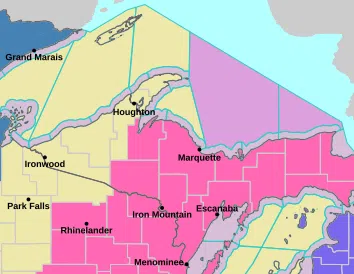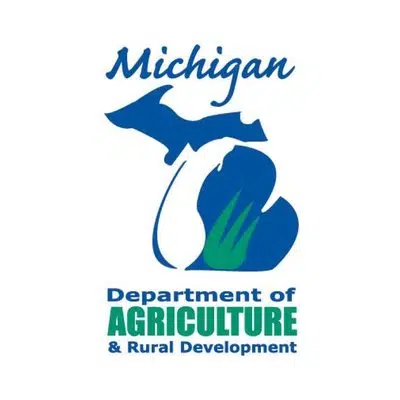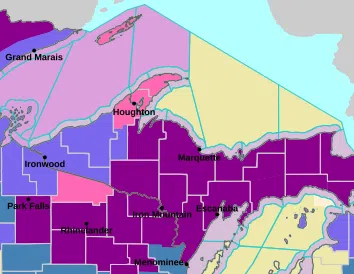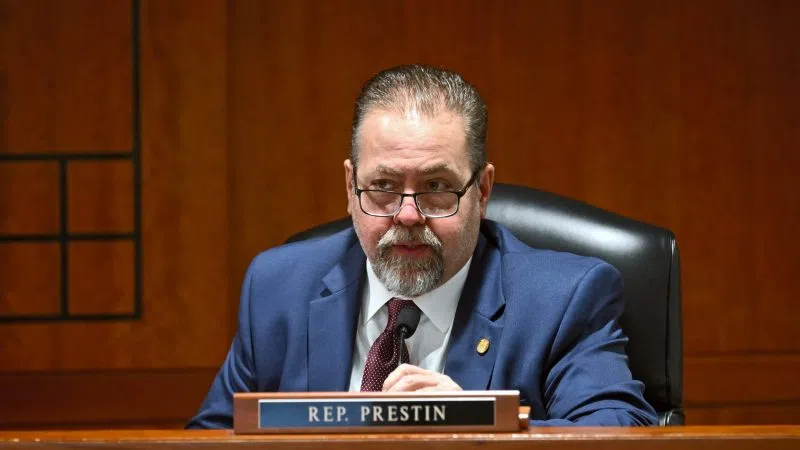The Sault Ste. Marie Tribe of Chippewa Indians announced today that it has been awarded a Rural Development Broadband ReConnect grant totaling $24,944,355 from the USDA’s Rural Utility Service (USDA-RUS).
The grant will allow the tribe to expand high-speed Internet access to its members by installing a fiber-to-the-premises network located on Sault Tribe’s Reservation Lands in Chippewa and Mackinac counties. The network will provide 1 gigabit broadband services to any subscribing households.
“Bringing affordable and reliable broadband service to our region is central to connecting our membership to medical specialists, job opportunities, and remote learning courses,” said Sault Tribe Vice Chairman Austin Lowes. “This rural development investment will connect tribal reservation lands from Sault Ste. Marie, south to Kincheloe, and to St. Ignace. The Sault Tribe Board of Directors thanks all tribal employees involved in making this opportunity a reality. This has been a truly collaborative effort and has the support of the entire board of directors and executive staff. We also want to thank Cloverland Electric for their support of this grant opportunity.”
The grant was supported by several Michigan elected leaders, including U.S. Senators Debbie Stabenow and Gary Peters, Congressman Jack Bergman and Gov. Gretchen Whitmer. Each leader was a key supporter of the Sault Tribe’s application and helped secure the necessary funds from USDA-RUS.
““High-speed internet means so much for our nation’s tribal communities, both in Michigan and nationwide, and I’m thrilled to be able to help expand broadband through the bipartisan infrastructure package,” said Sen. Stabenow. “Better, more reliable Internet connects kids with more resources for school, links patients to the doctors they need, and helps small business owners access a world of new customers.”
“Whether you are a student, running a small business, or working from home – reliable high-speed internet access is critical to keeping our communities strong and connected,” said Sen. Peters. “I was pleased to support this investment in critical broadband infrastructure to help ensure Sault Tribe members across the UP can access essential health care services, educational and business opportunities, and good-paying jobs.”
“With high-speed Internet as our tool, we can grow our economy, create jobs, and improve health and educational outcomes in every corner of our state,” said Lt. Governor Garlin Gilchrist II. “Governor Whitmer and I were proud to support the Sault Tribe in its grant application and we look forward to continuing our work to create opportunity by connecting Michigan communities.”
“High-speed Internet is critical to bridging U.P. communities with the rest of the digital world, and I’m thankful to the USDA’s Rural Utility Service for recognizing the need to ensure Sault Tribe members have access to this vital infrastructure,” said Rep. Bergman.
FEDERAL GOVERNMENT PRESS RELEASE FOLLOWS:
U.S. Department of Agriculture (USDA) Secretary Tom Vilsack today announced that the Department is awarding $502 million in loans and grants to provide high-speed internet access for rural residents and businesses in 20 states. The funding is part of the Biden-Harris Administration’s commitment to investing in rural infrastructure and providing reliable, affordable, high-speed internet for all. USDA is making the investments through the third funding round of the ReConnect Program.
In Michigan, the Sault Ste. Marie Tribe of Chippewa Indians is receiving a $25 million grant to connect 1,217 people and 26 businesses to high-speed internet in Chippewa and Mackinac counties. The Tribe will make high-speed internet affordable by requiring its service provider to participate in the Federal Communications Commission’s (FCC) Affordable Connectivity Program, which provides a discount of up to $30 per month – or $75 per month for households on Tribal lands – on household’s internet bills, as well as the FCC’s Lifeline Program. This project will serve Sault Ste. Marie Off-Reservation Trust Land, the Sault Ste. Marie Reservation as well as socially vulnerable communities in Chippewa and Mackinac counties.
“This investment will help both the Sault Tribe and the surrounding communities,” said USDA Rural Development State Director for Michigan Brandon Fewins. “We still have tremendous resources available, and I urge local governments, counties and tribes to contact us to see how we can help expand high-speed internet to their residents.”
USDA has announced $858 million in the third round of ReConnect funding so far and plans to make more investment announcements under this program in the coming weeks. Today’s announcement follows the Department’s July 28 announcement that it has invested $356 million through the ReConnect Program to help very rural residents and businesses in 11 states gain access to high-speed internet.
To be eligible for ReConnect Program funding, an applicant must serve an area where high-speed internet service speeds are lower than 100 megabits per second (Mbps) (download) and 20 Mbps (upload). The applicant must also commit to building facilities capable of providing high-speed internet service at speeds of 100 Mbps (download and upload) to every location in its proposed service area.
To learn more about investment resources for rural areas, visit www.rd.usda.gov or contact the nearest USDA Rural Development state office.
USDA touches the lives of all Americans each day in so many positive ways. In the Biden-Harris Administration, USDA is transforming America’s food system with a greater focus on more resilient local and regional food production, fairer markets for all producers, ensuring access to safe, healthy and nutritious food in all communities, building new markets and streams of income for farmers and producers using climate-smart food and forestry practices, making historic investments in infrastructure and clean energy capabilities in rural America, and committing to equity across the Department by removing systemic barriers and building a workforce more representative of America. To learn more, visit www.usda.gov.
If you’d like to subscribe to USDA Rural Development updates, visit our GovDelivery subscriber page.
























Comments